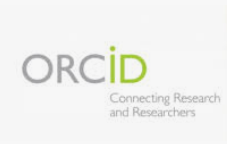Risk facts in patients with temporomandibular dysfunction
Keywords:
TEMPOROMANDIBULAR JOINT DISORDERS, CRANIOMANDIBULAR DISORDERS, STATISTICS AS TOPIC, HUMANS, ADULT, CHILDAbstract
The existing controversy about the multifactorial character of the temporomandibular dysfunction makes it difficult the complete knowledge of this entity. Thus there has being studied the behavior of several risk facts that can show themselves in an individual way or not, but contributing in many cases to unleashing this clinical problem. The purpose of this work was carrying out a descriptive and transversal study identifying several risk facts in 7-to-44 years-old patients with temporomandibular dysfunction, who are studying in several schools of the province of Matanzas. The sample was selected applying a probabilistic and multistage scheme and 1 866 persons were selected, grouped by age and sex. The dysfunctional diagnostic was achieved applying the Krogh Paulsen´s Test. As risk facts were identified: Parafunctional Habits, Dental Loss, Occlusal Interferences, Bruxism and Stress, determining that Parafunctional Habits were present in 47. 5 %, Dental Loss: 41.9 %. Occlusal Interferences: 39.7 %, Stress:33.4 %, and Bruxism: 30.3 %. It was appreciated an increase of these facts parallel to aging, though not evenly. There was stated a significant relationship between these facts and temporomandibular dysfunction. An interceptive, preventing action through opportune promotional, preventive and clinical interventional activities on these facts can contribute to diminishing the number of affected patients.Downloads
How to Cite
Issue
Section
License
All content published in this journal is Open Access, distributed under the terms of the CC BY-NC 4.0 License.
It allows:
- Copy and redistribute published material in any medium or format.
- Adapt the content.
This will be done under the following terms:
- Attribute the authors' credits and indicate whether changes were made, in which case it must be in a reasonable way.
- Non-commercial use.
- Recognize the journal where it is published.
The copyrights of each article are maintained, without restrictions.





